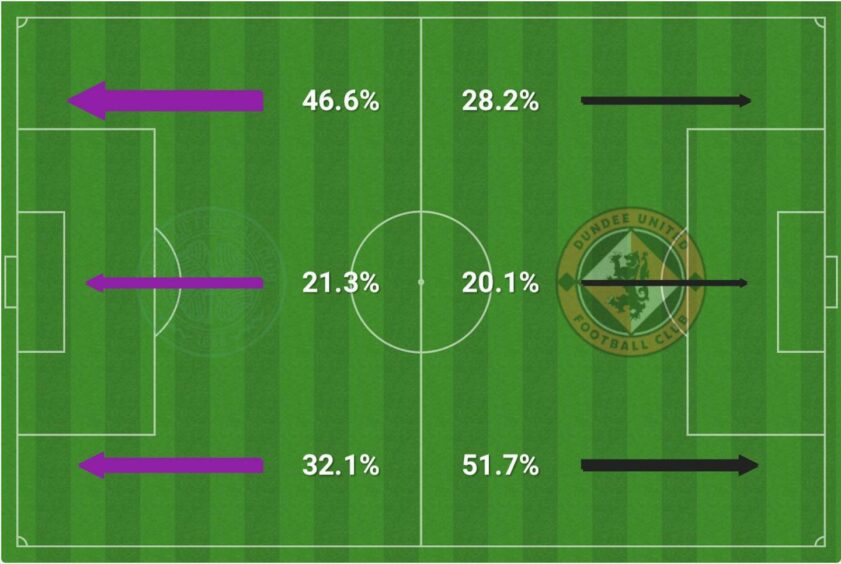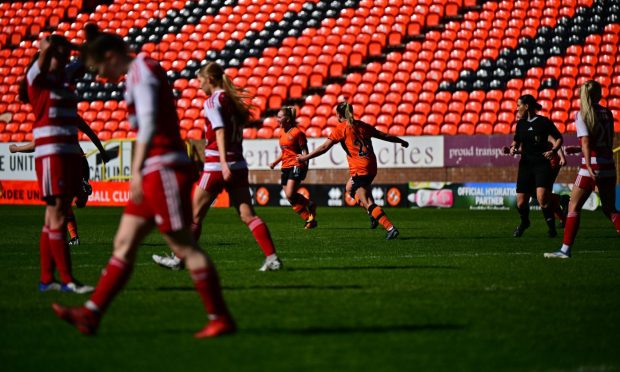There is a new manager at the helm.
A swathe of players have departed and seven have arrived.
Instead of pursuing Europe, Dundee United are simply targeting a maiden Premiership victory.
Much has changed since the Tangerines last crossed swords with Celtic — an evening which saw United secure continental qualifications and the Hoops win the title.
Nevertheless, there is plenty the Terrors can take from that breathless 1-1 draw in May as they seek to stun Ange Postecoglou’s men at Tannadice on Sunday.
A change of formation?
For the moment, Jack Ross’ preferred 4-2-3-1 shape isn’t working.
The full-backs are exposed, there is insufficient cover in midfield and you could drive a lorry through the space between the lines.
▶️All the goals from Tannadice Park where St Mirren won 3-0 to move into the top-six of the #CinchPremiership while Dundee United drop to 11th after another disappointing display. pic.twitter.com/3wkDBEJIFL
— Sky Sports Scotland (@ScotlandSky) August 20, 2022
Moreover, those defensive deficiencies are not offset by attacking potency.
United have surrendered their solidity and, for the moment, are getting nothing in return.
The Tangerines’ average xG (expected goals) from their four Premiership fixtures is 0.84.
Reverting to the 3-5-2 which served United so well last season — in terms of results, if not always scintillating fare — seems a necessity, particularly given how effective it was on the Hoops’ last visit to Tayside.
Tam Courts’ United smothered the central areas, remained compact and ensured there were no pockets of space in dangerous positions.
They forced Celtic into wide areas (see below).
In surrendering the flanks, the Terrors backed the makeshift defensive trio of Liam Smith, Ryan Edwards and Scott McMann to deal with deliveries.
With Charlie Mulgrew and Ross Graham available, United could field an even more stoic back-three — albeit mobility would be a consideration — and seek to repeat the feat.
Rediscover a combative edge
Shape is one thing.
But without resilience and application, United will be torn apart by this Celtic side, regardless of formation.
Following several passive, lethargic showings, the Tangerines could do worse than draw inspiration from the intensity and aggression they showcased three months ago.
Of the 105 duels that night, United won 55% of them, while they made 20 tackles to Celtic’s six (a statistic admittedly coloured by the Hoops’ dominance in possession).
No player on the pitch won more duels than Nicky Clark (nine), underlining the fantastic job he did dropping back to shackle Callum McGregor. A similarly selfless showing will likely be required from United’s attackers this weekend.
And no player made more clearances than Edwards’ eight.
Channelled aggression and commitment, from front to back.
In doing so, United restricted Celtic to an xG of 1.71. While high against any other opponent in the land, that figure is far below the Hoops’ average of 2.64 for the 2021/22 Premiership campaign.
Moreover, Postecoglou’s men registered just two shots on target.
Dylan the difference maker
Dylan Levitt showcased his undoubted ability on numerous occasions last season.
However, a case can be made — given the quality of the opposition and the fact United rested a few key players — for this being his most impressive outing of the lot.
WHAT A GOAL!! DUNDEE UTD ARE LEVEL! 1-1!! ⚽#MUFC loanee Dylan Levitt scores a WORLDIE! ⚡
It couldn't…could it? 👀🏆 pic.twitter.com/jcXvd0yVnu
— Sky Sports Scotland (@ScotlandSky) May 11, 2022
Starting with the blatantly obvious, his goal was magnificent.
The audacious under-foot roll to take possession; the awareness to drive forward; the outrageous technique — generating power and precision with little back-lift — to fire beyond Joe Hart.
However, his overall display was superb.
As pictured below, Levitt’s 54 touches (the most of any United player) were scattered all over the pitch. He was everywhere — box-to-box, flank-to-flank. A complete midfield performance.
His 33 accurate passes were the most of any United player, he won possession seven times — Liam Smith (10) was the only man in Tangerine to register better — and his tally of three interceptions was the best on the pitch.
If Levitt can rediscover his top form in time for Celtic’s visit, United’s hopes would be immeasurably boosted.














Conversation